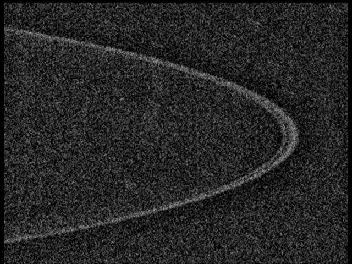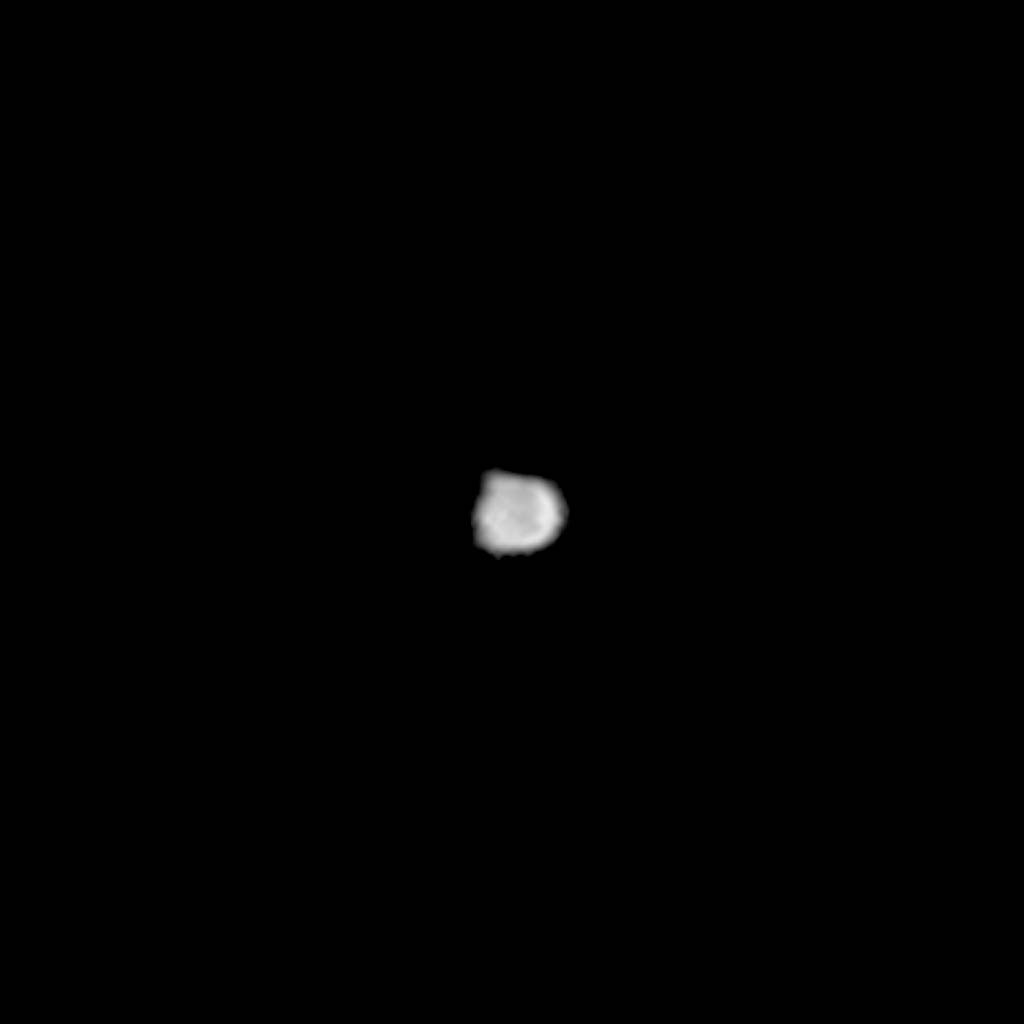Metis, a moon of Jupiter
79,535 miles
27 miles
Metis is the closest moon to Jupiter. It orbits the gigantic planet at a distance of about 128,000 kilometres (79,500 miles) and takes only 7 hours to travel around it. It was discovered in 1979 from pictures taken by the space craft Voyager 1 as it flew past Jupiter. It was identified as a moon in those pictures by the American astronomer Stephen P. Synott.
Metis is one of Jupiter's four inner moons. These are the four moons that are closest to Jupiter. The other inner moons are Adrastea, Amalthea and Thebe. The inner moons orbit within the orbits of Jupiter's largest moons - Io, Europa, Ganymede and Callisto. Those moons are also known as the Galilean moons.
Metis is quite a small moon and very irregularly shaped, being nearly twice as large on one side than it is on its other sides. Its dimensions are 60 x 40 x 34 km (37 x 25 x 21 miles). Its small size means that it only appeared as a dot in the discovery photographs taken by Voyager 1.

All of the Outer Planets have rings. Unlike Saturn's which are easily visible, the rings of planets like Jupiter are very faint and difficult to see. Rings are often made up of material from nearby moons. Jupiter's main ring is no exception and is made up of dust and rocks that is shedded from Metis when objects like meteorites crash into it. Jupiter's main ring is also made up of material from Metis' neighbour, Adrastea.
Metis and Adrastea orbit very closely to Jupiter's main ring with Metis being on one side of it and Adrastea on the other. As well as producing the material that makes up the ring, the two moons appear to hold the ring in place by "sherherding" it.






